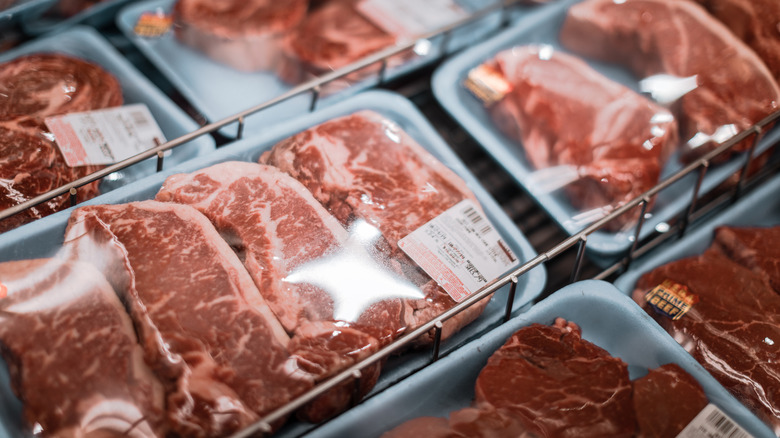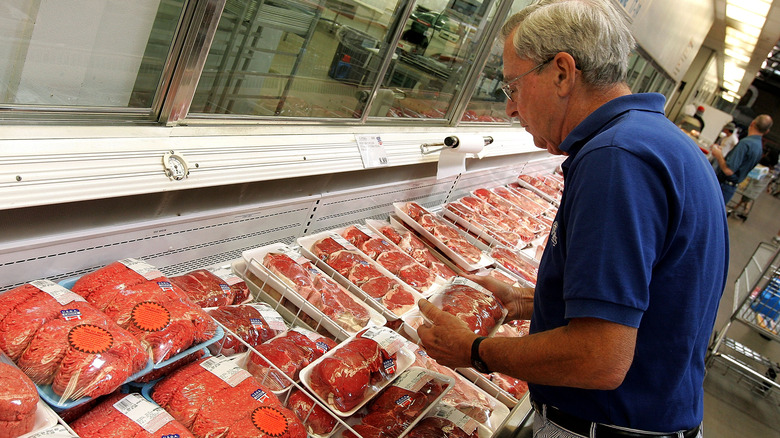The Label To Avoid When Buying Steaks At Costco
It's easy to believe that Costco is the answer to everything. Where else can you find cases of toilet paper in the same place as monster 10-pound desserts, real gold bars, and even a literal barrel of maple syrup. Not everything at Costco is worth buying, however, especially when it comes to certain cuts of steak, so make sure you're not blindly throwing ribeyes and strip steaks in your cart without reading the fine print.
Some of Costco's steaks have been mechanically tenderized, which is a process of piecing the meat with actual blades. Thankfully it's easy to avoid blade-tenderized steaks at the big box giant. All you have to do is carefully read the label sticker on the package of meat. If it's been mechanically tenderized, it will be clearly labeled.
Blade-tenderized meat is not a bad thing, per se, but it does carry a higher risk of foodborne illness than regular cuts of meat. And although Costco chooses to tenderize cuts that are not necessarily tough, like ribeyes, it stands to reason that they're taking this extra step because those particular cuts of meat would be tougher and chewier without tenderizing. This is a bit of a lose-lose proposition because meat gets tougher the longer it's cooked, and blade-tenderized steaks should be cooked longer so that there's no risk of getting sick.
What makes blade-tenderized meat different?
If you're not familiar with the mechanical blade tenderizing process, you're not alone. While the practice has been around for many years, most meat we get at the grocery store wasn't labeled to say it was processed this way until labeling requirements changed in 2016 (per the USDA). While the practice is only used in around 11% of the beef on the market according to PBS, it's pretty common amongst Costco offerings, and something to look out for if you prefer rare or medium rare steak.
The problem with blade-tenderized steak is that the meat is punctured with needles or small blades to break up the connective tissue. Just like ground beef, whatever is on the surface of the meat can be pushed inside the meat by the blades, so if there's bacteria present it will become lodged inside the steaks. Keep in mind that a machine can process many thousands of pounds of meat a day, creating lots of chances for cross contamination, so blade-tenderized steaks need to be cooked to at least 145 degrees Fahrenheit, or medium, followed by a 3-minute rest according to the USDA. So if you like rare ribeyes, check the meat labels on your next trip to Costco. They should say right at the top if they're blade-processed so you'll know to steer clear.

